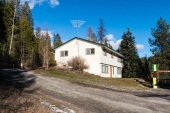posted 13 years ago
Sounds like my land... half rocks, half dirt and some places where the dirt is mighty thin over the limestone bedrock. Nonetheless, the acres of established large trees show that the native trees, given time and no doubt lots of failures, can find a way to survive, but this is many, many decades of growth. In many places the roots are well above the soil line, seeking air, but limestone is also soft enough that I imaging the tougher trees break it up pretty wood.
What I have done is create raised beds for my annual vegetables. Elsewhere, I have planted as many natives as possible and mulched heavily with composted leaves, courtesy of the city mulch pile and time spent picking out shredded garbage. The local worms LOVE this stuff and are pulling it into the soil very quickly. In some places, I mulched in the fall and by spring the soil was much improved. (In our climate, the worms are busiest in the cool part of the year.) Since the mulch is decomposing so rapidly, there really isn't any building "up."
If you have just one area like this, that might be a great spot for a grassy play area or another outdoor space for humans. I built a shed over one particularly bad spot, and I have a whole spot where even the weeds don't want to grow that I haven't figured out what to do with.
You haven't mentioned what you really want to do with this spot. It might be easiest for you to decide what you want to do and a couple of alternatives, and then see if there's a way to get there in an amount of time you are willing to spend waiting on the project.






































